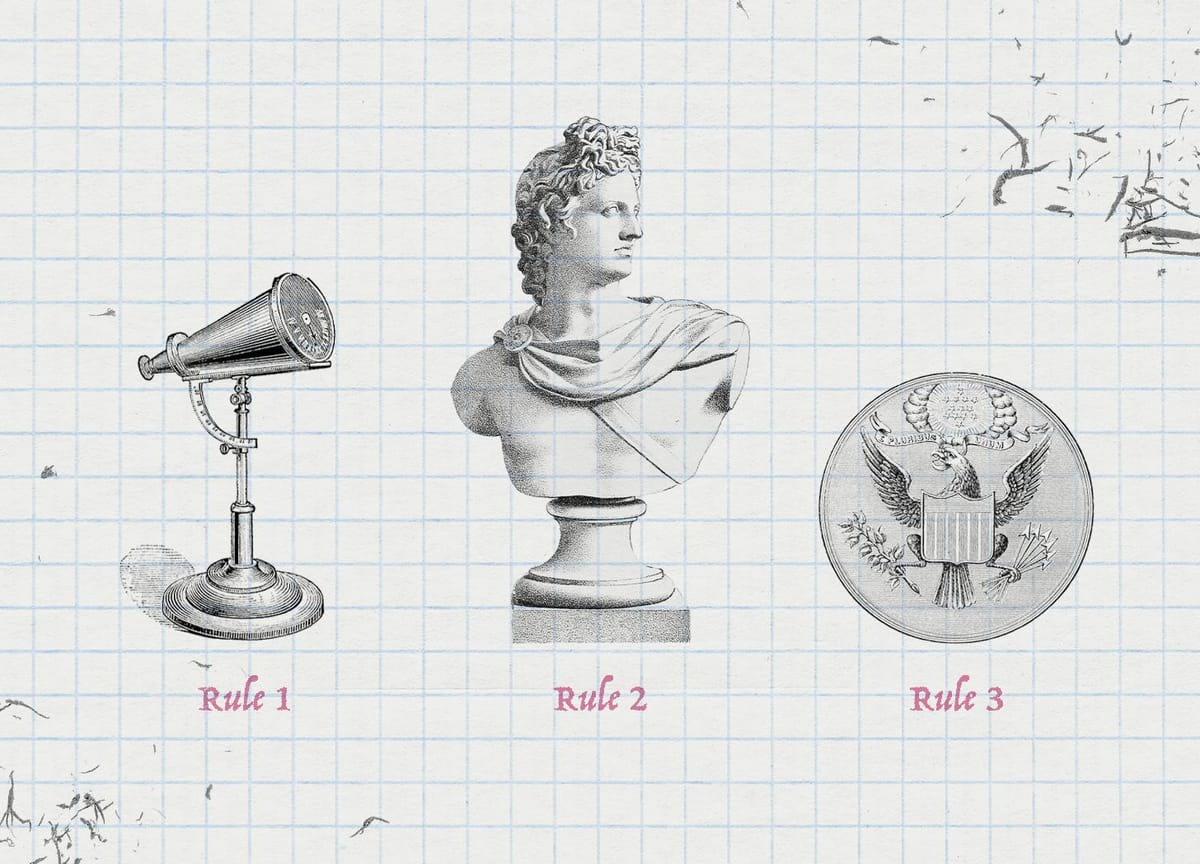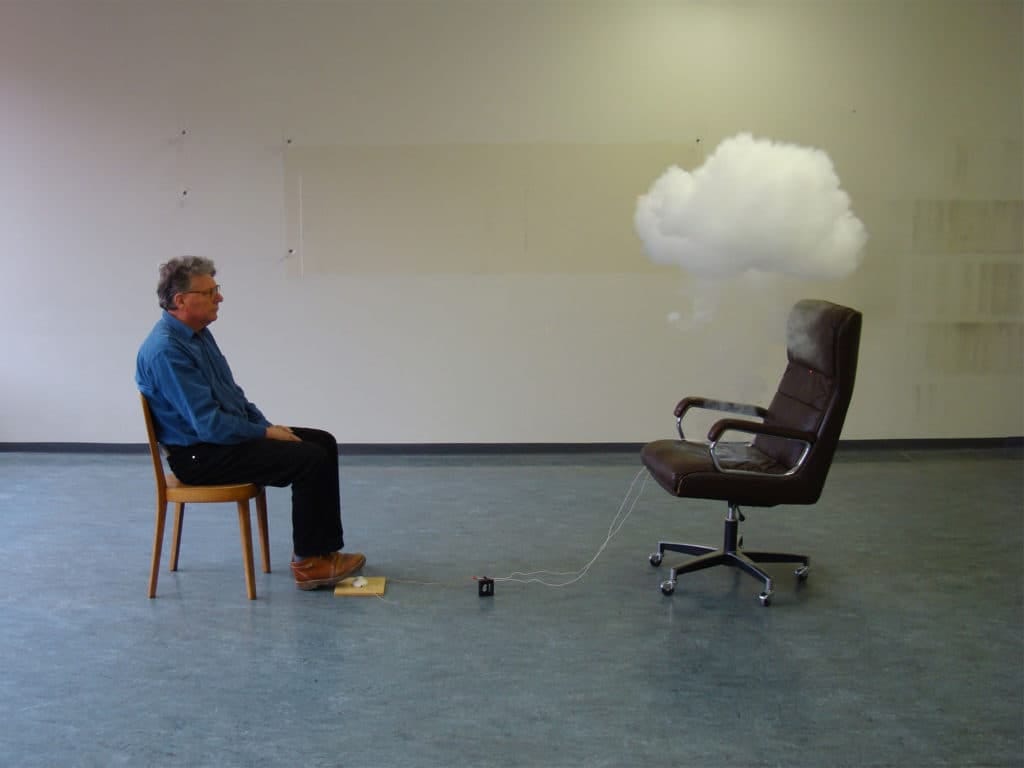Made to Be Broken
Art and emotions don’t follow the rules

Hi everyone,
First, an invitation for those in Toronto: this Saturday, July 15, is Frontier Magazine’s first event, produced in partnership with The Bentway. Robyn Maynard, coauthor of the bestselling book Rehearsals for Living, will be in conversation with author and educator Kate Stanley about crisis, care, and fostering interconnectedness in the city. The event, held at The Bentway Studio at 55 Fort York Blvd., is free with RSVP. Learn more and register on this page.
§
I find comfort in rules, in things having their proper place, in a baseline stability that reduces the number decisions I must make. This tendency has been heightened by becoming a father, as so much parenting advice boils down to “be consistent.”
So I was naturally curious about Lorraine Daston’s 2022 book Rules: A Short History of What We Live By (buy in the US or Canada). It’s a fascinating intellectual history that sweeps broadly across Western cultures to, among other efforts, identify three types of “rules”: those that measure, those that serve as model or paradigm, and laws. I understood intuitively the first and last of these types; one gives us the word (and object) ruler, the other is why, for example, the groceries I buy do not make me sick and my neighbor doesn’t steal the chairs off my front porch.
It took me longer to make sense of the second category, of rules as models or paradigms. To explain it, Daston ranges from Pliny the Elder to Albrecht Dürer, describing a pre-modern world in which one thing—a statue, a building, a person—could serve as a guide for other, later examples. What’s fascinating about this category is that it allows for discretion, judgment, emulation, wiggle room. It’s about translating the universal (in this case the model) into something fit for a particular set of circumstances. She cites the how-to manuals written by Dürer and other artists and artisans of the period, which presumed the reader understood the subject and had an ability to improvise: “No rule on the page was ever thick enough to teach an art by itself. […] Rules of art began and ended in experience.”
Daston argues there is a historical reason for my inability to intuit the rule as paradigm: since the nineteenth century, the rule as model has been edged out by the rule as algorithm. Ironclad algorithmic rules supposedly eliminate the need for discretion, for judgment, for individual experience. But as the recent revelations of human bias coded into computer algorithms suggests, vanishingly few areas of life can be mechanically predicted.
I thought about this aspect of Daston’s book in recent weeks as I sought information about a new exhibition in Malmö by Roman Signer, a Swiss artist I admire. He’s known for sculptures, installations, and performance documentation in which carefully calibrated systems generate unexpected, poetic, or absurd results. Signer often uses natural elements—air, fire, water—to effect changes in something quotidian and man-made. He has “played” a piano by placing ping-pong balls on its strings and turning fans onto them. He has used fireworks to spin in an office chair, lift a hat off his head, and startle himself into painting a dot on a canvas.
During my online search, I watched a short video of Signer “activating” a sculpture composed of ten red buckets filled with sand and stacked atop one another. The artist, who stands before a small audience, bends over next to the column and uses an X-ACTO knife to slice open the bottom-most bucket. He stands back and watches impassively as sand leaks from the hole. Five seconds go by, then ten, then all at once the column collapses, becoming a line of red vertebrae resting in a long, narrow dune.
It’s a funny sequence, but also a bit sad, especially if you let the video repeat several times as I did. Watching it, I began thinking of Daston’s book, and of her idea of a model. No matter how carefully he sets up his experiments, no matter how many times he practices them, Signer will never get the same results twice. But in addition to this variance, there is a second slippage—between his intent and how his work is received. Given his documented love of physics, I don’t think he often imagines his work as pathetic, in the sense of arousing pity through vulnerability or sadness.

Yet that’s often how I take it, and I realize that accidental swelling of emotion is what I value in the work of my favorite artists. Felix Gonzalez-Torres, with his clocks slowly falling out of alignment. Katie Paterson, mapping dead stars. Bas Jan Ader, tumbling off his roof or into a canal. Vija Celmins, meticulously copying photographs of the desert floor, spiderwebs, and the night sky. Novelist Rachel Kushner, writing about Signer in 2002, noted, “If there’s madness to his scientific method, his investigations are after something understated and abstract: a glimpse of the ephemeral.” Each of these artists creates structures or situations that are rigorously structured yet leave space for feeling, that most ephemeral thing. Jörg Heiser famously labeled this strain of art-making “romantic conceptualism.”
Neither emotion, as a concept, nor fine art as we now understand it figure into Daston’s story. Colin Burrow, in his insightful review of her book, writes, “Reality remains gorgeously difficult to regulate, just as complex human behaviors remain more or less impossible to model because we humans are a bunch of stubborn-minded bastards who just won’t do what we’re told.” What I realized once again, watching the video of Signer’s action, is that art can model this for us. (Even through a screen.) Something always leaks, like the sand in Signer’s sculpture. Great art shows us how rules, no matter how many or how detailed, inevitably run up against a boundary—and the boundary is us.
Love all ways,
Brian
🔗 Good Links
- ⏳ On patience as a business virtue: “I’ve been asked many times, ‘How do you deal with the competition?’ There are many answers. One is: wait until they die.”
- 💻 Rauno Freiburg on craftsmanship: “This is neither a tutorial nor a guide. It’s an observation of the invisible details of [digital] interactions that I use often but rarely think about.” (See also his remarkable archive of experiments.)
- 📂 Elizabeth Goodspeed, Mindy Seu, Esiri Erheriene-Essi, and Daniela Spector on digital archiving and “creative preservation”
- 🗣️ Five literary translators on the joys and challenges of their work.





